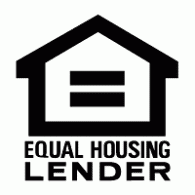Many homeowners have a dream of owning a second home, whether for vacation, rental income, or investment. However, financing a second home can be a daunting task, especially when you want to avoid liquidating other assets or taking on new debt with high interest rates. One empowering solution is leveraging the equity in your primary residence through a cash-out refinance to purchase the second home.
This article will explore how homeowners can use the equity in their primary residence to finance a second home purchase. We will discuss how to assess your home equity, the different financing options (such as HELOCs, home equity loans, and cash-out refinances), and the benefits and risks of leveraging home equity for a new property.
Understanding Home Equity Loan For Second Home Purchase
Before exploring financing options, it’s essential to understand home equity loan for second home purchase and how it can be utilized. Home equity is the difference between your home’s current market value and the outstanding balance on your mortgage. This understanding provides a sense of security, knowing that as you pay down your mortgage and your home’s value increases, your equity grows.
For example, if your home is worth $500,000 and you owe $200,000 on your mortgage, you have
$300,000 in equity. This equity represents the portion of your home that you own and can be a powerful financial tool.
How to Assess Your Home Equity
Assessing your home equity involves determining the current market value of your home and subtracting any outstanding mortgage balances. This process provides a clear picture of your financial situation, giving you peace of mind and allowing you to plan for the future.
- Determine Your Home’s Market Value: The most accurate way to determine your home’s value is to get a professional appraisal. However, you can also get an estimate using online tools like Zillow or by comparing recent sales of similar homes in your area, such as a three-bedroom, two-bathroom house with a similar square footage and lot size.
- Calculate Your Mortgage Balance: Check your most recent mortgage statement to determine how much you still owe on your home.
- Subtract the Mortgage Balance from the Market Value. This will give you the equity in your home.
Once you have a clear picture of your home equity, you can explore how to use it to purchase a second home.
Financing Options for Leveraging Home Equity
To finance a second home, there are several ways to tap into your home equity. Each option has its own set of advantages, disadvantages, and risks. The most common methods include a Home Equity Line of Credit (HELOC), a home equity loan, and a cash-out refinance.
1. Home Equity Line of Credit (HELOC)
A Home Equity Line of Credit (HELOC) is a revolving line of credit secured by the equity in your home. It works similarly to a credit card, where you are approved for a maximum amount and can borrow against that line as needed.
How It Works: With a HELOC, you can borrow up to a sure % of your home’s equity, usually up to 85%. The lender will provide you with a line of credit, which you can draw on as needed. You’ll only pay interest on the amount you borrow.
Advantages of borrowing from home equity for a second home:
Flexibility: You can borrow from home equity as much or as little as you need up to your limit for a second home purchase.
Lower Interest Rates: HELOCs typically have lower interest rates than personal loans or credit cards.
Interest-Only Payments: During the draw period (usually 5-10 years), you may only be required to make interest payments.
Disadvantages:
Variable Interest Rates: HELOCs often have variable rates, which means your payments could increase over time.
Risk of Losing Your Home: Since your home secures the loan, failure to repay could result in foreclosure, which is the legal process by which a lender can repossess your home if you fail to make your mortgage payments.
Complexity: Managing a revolving line of credit can be more complex than a traditional loan.
2. Home Equity Loan
A home equity loan is a lump-sum loan secured by your home’s equity. Unlike a HELOC, a home equity loan provides a fixed amount of money you repay over a set period with fixed monthly payments.
How It Works: You borrow a lump sum against your home’s equity and repay it over a fixed term, typically 10 to 20 years. The interest rate is usually fixed, meaning your monthly payments remain consistent.
Advantages:
Fixed Interest Rates: Home equity loans generally have fixed rates, providing stability in your monthly payments.
Predictability: Budgeting is straightforward, with fixed loan terms and monthly payments.
Lower Interest Rates: These loans often have lower interest rates than personal loans.
Disadvantages:
Less Flexibility: You receive a lump sum and can only draw so many funds with a HELOC.
Risk of Foreclosure: Like with a HELOC, your home is at risk if you cannot make the payments.
Closing Costs: Home equity loans often have closing costs and fees that can increase the overall expense.
3. Cash-Out Refinance
A cash-out refinance involves refinancing your existing mortgage for more than you owe and taking the difference in cash. This option allows you to convert a portion of your home equity into cash, which can then be used to purchase a second home.
How It Works: With a cash-out refinance, you take out a new mortgage larger than your current one. The difference between the two mortgages is given to you in cash. For example, if you owe $200,000 on your current mortgage and refinance it for $300,000, you’ll receive $100,000 in cash to use as you see fit.
Advantages:
Potentially Lower Interest Rates: If mortgage rates have dropped since you first took out your mortgage, you could benefit from a lower interest rate.
Consolidation of Debt: You can pay off your original mortgage and gain access to cash without taking on a second loan.
Large Lump Sum: A cash-out refinance typically provides more money than a HELOC or home equity loan.
Disadvantages:
Extended Mortgage Term: You may extend the length of your mortgage by refinancing, which could increase the total amount of interest paid over time.
Higher Monthly Payments: Depending on the new loan amount and interest rate, your monthly mortgage payments could increase.
Closing Costs: Refinancing comes with closing costs that can be significant, although some lenders may offer options to roll these into the new mortgage.
Benefits of Using Home Equity Loan to Purchase a Second Home
Leveraging home equity loan to purchase a second home offers several benefits, particularly for those looking to maximize their financial resources and investment potential.
1. Access to Lower-Cost Financing
Home equity financing options often come with lower interest rates than other loans, such as personal loans or credit cards. This is because the loan is secured by your home, which reduces the lender’s risk. By tapping into your home equity loan, you can access funds at a lower cost, making the purchase of a second home more affordable.
2. Tax Benefits of Home Equity Loan For Second Home Purchase
Sometimes, the interest paid on home equity loans for second home purchases, HELOCs, or cash-out refinances may be tax-deductible if the funds are used for home improvements or other qualifying expenses. However, tax laws can be complex, so you must consult a tax advisor to understand the specific deductions available.
3. Potential for Rental Income
Suppose you purchase a second home as a rental property. In that case, you can generate additional income to help offset the loan cost. This rental income could also improve your overall financial stability and provide a source of income in retirement.
4. Investment Growth
Real estate has historically been a strong investment, with property values generally appreciating over time. By purchasing a second home, you may benefit from the appreciation of both your primary residence and the new property, further increasing your overall net worth.
5. Diversification of Assets
Investing in real estate allows you to diversify your assets, reducing reliance on other investment forms, such as stocks or bonds. A second home can provide both a personal retreat and a financial asset, offering flexibility and security.
Risks of Leveraging Home Equity for a Second Home Purchase
While using home equity to finance a second home offers many benefits, it also comes with risks that homeowners should carefully consider.
1. Risk of Foreclosure
Since home equity loans, HELOCs, and cash-out refinances are all secured by your home, failure to make payments could result in foreclosure. This is a significant risk, especially if your financial situation changes unexpectedly, such as through job loss, illness, or other economic downturns.
2. Increased Debt Burden
By borrowing against your home equity, you are taking on additional debt. This increased debt burden could strain your finances, particularly if you experience fluctuations in income or unexpected expenses.
3. Potential for Negative Equity
If property values decline, you could find yourself in a situation where you owe more on your home than it’s worth, also known as negative equity or being “underwater.” This can make it challenging to sell your home or refinance in the future.
4. Market Volatility
Real estate markets can be volatile, and there’s no guarantee that your second home will appreciate. If the market declines, you could end up with a property worth less than what you paid for it, affecting your overall financial health.
5. Impact on Retirement Plans
Using home equity to purchase a second home could impact your long-term financial goals, particularly retirement. If you’re relying on your home’s equity as part of your retirement plan, borrowing against it could reduce the funds available to you later in life.
Conclusion
Leveraging your home equity to fund a second home purchase is a strategy that can offer significant financial benefits, but it’s with risks. By understanding the different financing options—such as HELOCs, home equity loans, and cash-out refinances—and carefully weighing the advantages and disadvantages, you can make an informed decision that aligns with your financial goals.
Whether you’re looking to buy a vacation home, an investment property, or a retirement retreat, using a cash-out refinance to purchase a second home could be a smart way to make your dream a reality. However, it’s crucial to assess your financial situation, consider the risks, and consult with financial professionals to ensure that this strategy fits you.
Ultimately, with careful planning and consideration, leveraging your home equity can effectively expand your real estate portfolio and enhance your financial future.





